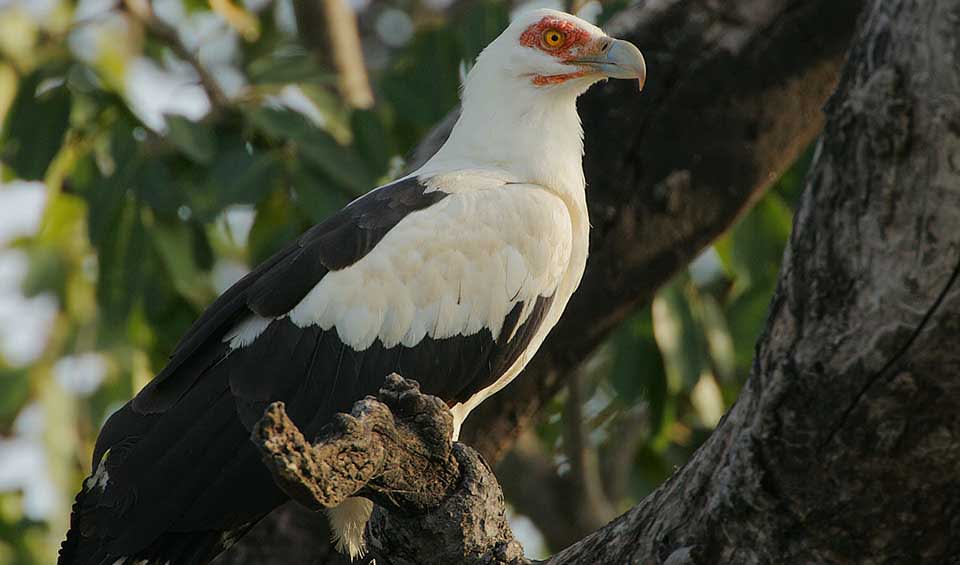Gypohierax – Palm-nut vulture
Carrion? Nah, I prefer coconuts
One of Africa’s most unusual and fascinating birds of prey—mainly because it defies almost everything we expect from a vulture. Unlike its scavenging, meat-loving relatives, the palm-nut vulture is largely frugivorous, feeding primarily on the fruit of oil and raffia palms. This makes it one of the very few birds of prey in the world whose diet is mostly plant-based, and it thrives in the wetlands, riverbanks, coastal forests, and palm-dotted savannas of sub-Saharan Africa.
Adults have a bold look: mostly white with contrasting black flight feathers and tail, and a bare face and eye-ring that is bright red, adding to their vulture-like, somewhat prehistoric appearance. Juveniles, however, are mostly brown and look much more like typical birds of prey, only gradually developing their adult plumage over several years.
Despite being called a vulture, this species behaves more like a bald eagle or a sea eagle, especially in its flight style—soaring gracefully over wetlands and coasts on broad wings. It is most often found near water and palm trees, where it feeds on palm fruits, particularly the oily nuts of the raffia palm, which it swallows whole or rips apart with its strong, curved beak. While its diet is mostly fruit, the palm-nut vulture is not a strict vegetarian—it will also eat fish, crabs, dead animals, and small reptiles when available.
Palm-nut vultures are typically seen alone or in pairs, although they may gather in small groups around abundant food sources like fruiting palms. They are relatively quiet compared to other vultures, but may produce soft whistles or croaking sounds, especially during courtship or when alarmed.
Species in this genus
Palm-nut vulture
Carrion? Nah, I prefer coconuts

